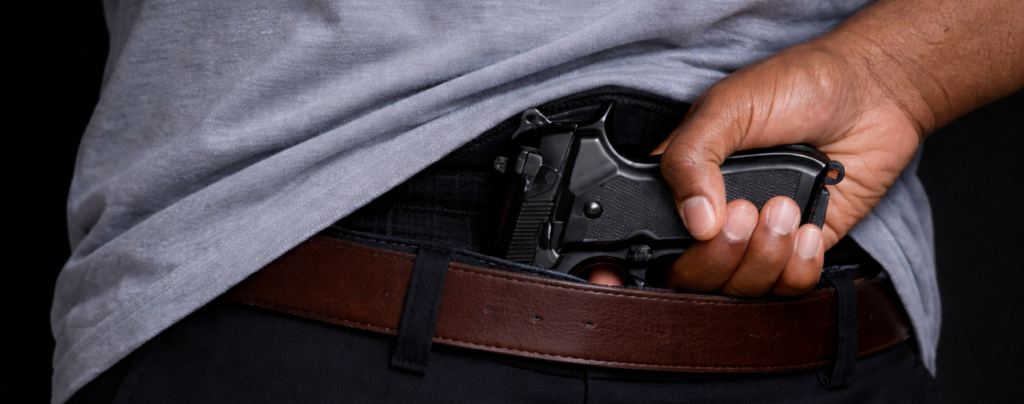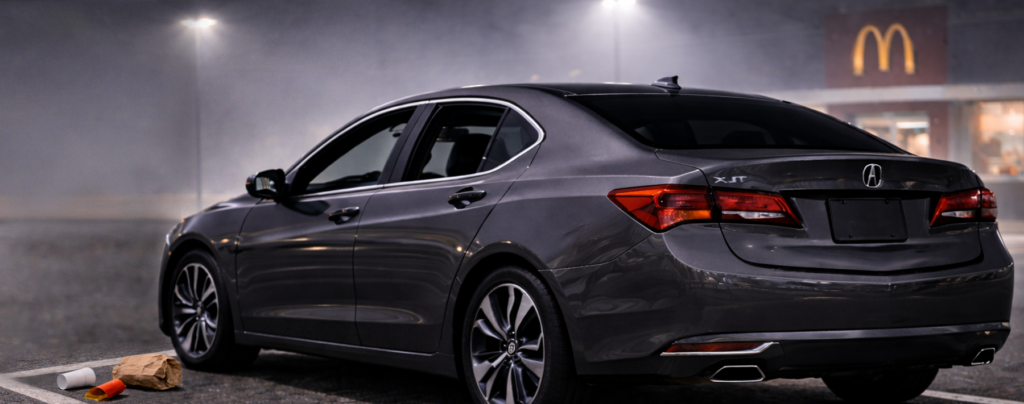The introduction of body-worn cameras (BWCs) is one of the most successful policing reforms of the 21st century. Adopted after high-profile incidents involving use of force by law enforcement officers, BWCs have been embraced as a tool for increasing transparency, building public trust, and improving accountability.
Though the first body-worn cameras were used in the UK around 2005, they weren’t deployed in the U.S. until the early 2010s. By 2016, nearly half of all law enforcement agencies in the United States (47%) had acquired body-worn cameras. Adoption was especially high among large departments (those with 500 or more sworn officers), with around 80% already equipped with BWCs by that time. This rapid embrace of BWCs — prompted, in part, by public pressure for more comprehensive oversight of police operations — was supported by federal grants that helped fund the technology.
The “Civilizing Effect”
The underlying promise of body-worn cameras was simple but powerful. The presence of a recording device, people assumed, would encourage both officers and the people they interact with to behave with more civility. The expectation was that BWCs would lead to fewer use of force incidents and community complaints. This idea — often referred to as the “civilizing effect” — suggests that when people know they’re being watched and/or recorded, they are more likely to de-escalate, follow rules, and avoid conflict.
Over the past decade, researchers and policymakers have tested these assumptions in various ways, though questions remain about how, when and why BWCs influence behavior. Here is some research to support the “civilizing effect” hypothesis:
- Miami-Dade County, Florida: A study found that in Miami-Dade County, BWCs led to a 19% reduction in physical use of force when officers kept cameras on throughout their shifts. The department also saw a 74% decrease in civil cases filed against officers, suggesting a major drop in incidents serious enough to provoke litigation.
- Rialto, California: In a widely cited experiment, the Rialto Police Department’s randomized controlled trial found use of force incidents dropped by more than 50% among officers wearing BWCs. Additionally, civilian complaints plummeted by 88%, indicating a sharp reduction in contentious or poorly handled encounters.
- Las Vegas, Nevada: A study sponsored by UNLV involving about 400 officers from the Las Vegas Metropolitan Police Department found officers equipped with BWCs saw a 37% reduction in use of force events and a 30% decrease in complaints about officer misconduct. These improvements occurred without any dramatic shift in officer deployment or training.
- Chicago, Illinois: A large-scale meta-analysis by the University of Chicago Crime Lab and the Council on Criminal Justice confirmed BWCs reduce both conflict and complaints. They found BWCs led to a nearly 10% drop in police use of force and a 15% reduction in civilian complaints across diverse jurisdictions.
Though they don’t specifically say so, we can assume most (if not all) of these studies involved standard BWCs that are relatively unobtrusive. They’re generally small and black in color, blending in visually with a uniform or tactical vest. That wasn’t the case, though, with a recent study out of Miami Beach.
Visual Warnings on Body-Worn Cameras
A study published in the Journal of Experimental Criminology challenges the widely held assumption that making police BWCs more visible will further reduce use of force by police. The experiment, which used data collected during 2017, tested whether a highly conspicuous sticker reading “VIDEO & AUDIO” on officers’ BWCs would change behavior by making community members more aware they were being recorded.
The theory behind the intervention was that enhanced visibility would lead to greater self-restraint by both officers and civilians, ultimately promoting less confrontational encounters. The psychology is much like the “Smile! You’re on Camera” signs in convenience stores that supposedly help deter shoplifting and robberies.
The study used a randomized controlled trial design spanning six months. It assigned officers across 36 units to either wear cameras with yellow warning stickers (test group) or wear standard cameras without stickers (control group). Officers in both groups were instructed not to announce or otherwise call attention to the fact that they were wearing a camera, allowing researchers to isolate the impact of the visual warning alone. The trial covered approximately 28,400 public encounters across both groups.
“Technology in policing is not neutral — how it is presented, communicated and perceived matters as much as its technical capabilities.”
Surprising Result: Increased Use of Force
Contrary to expectations, researchers discovered the yellow stickers actually increased the likelihood of force being used during police encounters. In the stickered group, officers used force in 0.22% of encounters, compared to 0.14% in the control group — a statistically significant difference. Statistical analysis revealed officers wearing the visual warning had 147% higher odds of using force than those in the control condition. The effect was even more pronounced in “proactive” police work (such as officer-initiated stops) where the odds of force were 205% higher for officers with the yellow warning label.
These findings directly challenge the “civilizing effect” theory that making surveillance more obvious leads to calmer, safer interactions. Rather than deterring escalation, the bright yellow stickers may have increased tension, triggered latent defiance or undermined procedural legitimacy. The researchers note officers’ behavior was not so different that it could explain the result through activity level alone. This suggests the stickers themselves likely played a role in shaping the dynamics of encounters.
While the study offers robust statistical evidence for the results, the authors also acknowledge some limitations. For example, all use of force data was self-reported by officers, without third-party verification from body camera footage or civilian input. Also, the study design couldn’t fully rule out “spillover” effects, such as officers in the control group verbally announcing their cameras in spite of instructions not to. Moreover, the trial took place within a single city, limiting its generalizability across departments with different policies, training or relationships with their communities.
The “Behind the Yellow Sticker” study provides important evidence that visual surveillance cues, in isolation, do not necessarily reduce police use of force and may (under certain conditions) have the opposite effect. These findings raise critical questions about how BWCs and their visibility interact with officer conduct and public perception in high-stakes encounters.
Timely law enforcement content in your inbox: SUBSCRIBE NOW!
Possible Explanations for the Increased Use of Force
The findings raise important questions about how civilians perceive surveillance, power and fairness in law enforcement encounters. The researchers provided several potential mechanisms for this counterintuitive result.
1. Psychological Reactance: “I’m being watched.”
One of the most compelling explanations involves reactance theory, a well-supported concept from social psychology. Reactance occurs when individuals believe their freedom or autonomy is being unfairly constrained. The presence of a highly visible “VIDEO & AUDIO” warning label on a BWC may send an implicit message that the person is under suspicion. This might have resulted in:
- Perceived threat to autonomy: Civilians might feel coerced or manipulated, leading to a hostile or defensive reaction.
- Increased defiance or resistance: Rather than complying peacefully, some individuals may push back against the perceived control — increasing the likelihood of confrontation (and thus, force).
- Heightened emotional arousal: Surveillance cues may amplify stress or anxiety, making even neutral encounters feel antagonistic.
Within this explanation of the results, the sticker acts as a trigger rather than a deterrent.
2. Procedural Justice: “You’re recording me, but not explaining why.”
Procedural justice theory holds that people are more likely to comply with authority when they perceive it as fair, transparent and respectful. In the Miami Beach study, officers did not verbally inform individuals about the BWCs — thus removing possible explanations from interactions. This may have had some key impacts:
- Surveillance without transparency: A bright sticker without context might seem like covert monitoring disguised as openness. The lack of dialogue could be interpreted as impersonal or even threatening.
- Reduced legitimacy of the encounter: If people felt they were being recorded without explanation or respect, they might distrust the officer’s intentions or even feel dehumanized.
- Undermining perceived fairness: Civilians might view the stickers not as a protective mechanism, but rather as a way of asserting control — particularly in communities with pre-existing tensions around policing.
Without a verbal cue to build rapport, the visual-only strategy likely degraded trust and escalated tension, especially in proactive stops where subjects were already on high alert.
3. Misinterpreting the Visual Cue: “It’s for the officer, not me.”
Another possibility is that the visual sticker increased officer assertiveness rather than altering civilian behavior. Officers wearing prominent visual warnings may have felt:
- Camera as psychological backup: Officers may have felt they were given “permission” to escalate use of force under the assumption they were protected by the presence of a conspicuously labeled camera.
- Emboldened by perceived legitimacy: The sticker might have served as a self-validating cue for officers, reinforcing their authority to act — especially if they assumed the camera would help justify or discourage complaints.
This flips the assumed deterrent effect on its head. Instead of producing a “civilizing effect” on citizens, the sticker may have provided psychological license for increased aggression from officers.
4. Symbolic Meaning of the Sticker: “You’re assuming I’m a criminal.”
For some, the label itself — “VIDEO & AUDIO” in bold, highly visible lettering — may have carried unintended connotations, including:
- Implied criminality: People may have interpreted the label as the type of warning typically used in adversarial or punitive contexts — heightening fear, embarrassment, or aggression.
- Signal/behavior mismatch: When officers acted in a professional or friendly way while wearing a camera that suggested risk or wrongdoing, it could have created cognitive dissonance for civilians, making them unsure how to respond, and potentially leading to reactive behavior.
Of course, it’s entirely possible all or none of these explanations are true. Clearly, more research is needed to determine the mechanism(s) that produced these surprising results.
What We Can Learn from “Behind the Yellow Sticker”
The Miami Beach study complicates the conventional wisdom about BWCs and their so-called “civilizing effect.” While past research has consistently shown BWCs — when worn passively and unobtrusively — can reduce use of force incidents and civilian complaints, this study demonstrates how making the presence of the camera overtly obvious through visual warnings may unintentionally increase the likelihood of force, especially in proactive policing contexts. This challenges the assumption that greater transparency or visibility automatically enhances accountability or de-escalation.
Simply put, the bright “VIDEO & AUDIO” sticker may have altered the psychological dynamics of police-public encounters. Each possible explanation for this points to a more nuanced understanding of how behavioral cues (visual, verbal or otherwise) shape moment-to-moment decision-making on both sides of an encounter.
Future research will likely shed light on how combinations of visual and verbal cues, improved officer training and community context can influence outcomes in police encounters where a BWC is present. (And these days, a BWC is almost always present.) Departments experimenting with signage or verbal warnings should be cautious not to assume these additions will always lead to calmer or safer outcomes. In fact, poorly framed visibility cues may do exactly the opposite.
Ultimately, this study serves as a timely reminder that technology in policing is not neutral. The way it is presented, communicated and perceived matters almost as much as its technical capabilities. As agencies continue refining their BWC policies, attention must shift beyond simply whether cameras are present to how they are used — and how they are understood by the communities they are meant to serve.
- Blog Articles



